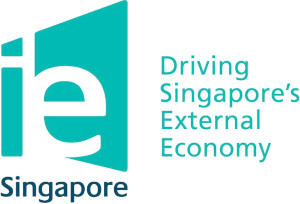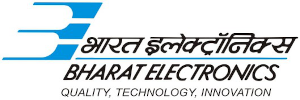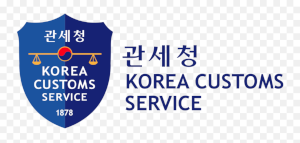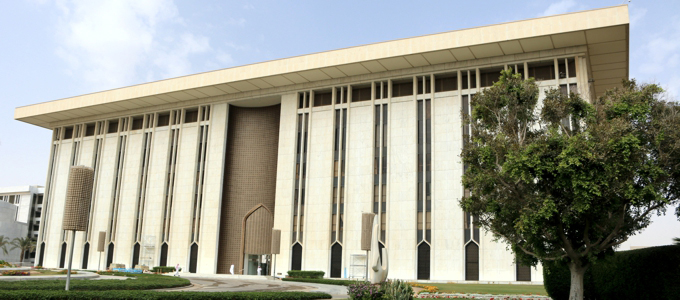In the digital era, a rising number of governments have implemented policies targeted at stimulating growth through innovation and technology upgrading. Knowledge management is an essential strategic resource that defines the success of e-government and public utility services.
According to OECD’s 2003 survey findings, the predecessors for the establishment of knowledge management for public services were:
- Concerns for efficiency and productivity
- Duplication of efforts between divisions and directorates
- To enhance transparency while improving trust
It is essential that national decision-makers seek direction on establishing, expanding, and consolidating free & open-source software to function as knowledge hub platforms. Many nations and organisations have established institutional frameworks that actively participate in global development and foster experiences through web platforms.
Significance of knowledge hub platforms in government practices
According to Maiser, knowledge management is a productive set of iterative, life cyclic, dynamic and systemic exploitation, research and procedures to enable reusability and actionability of information.
Knowledge management provides the overall strategy to manage e-government elegantly to make knowledge more useful and accessible and keep it updated. Digital solutions contribute to sustainable development and an effective upliftment of public utility services through ad hoc actions and long-term initiatives and partnerships.
Defining innovation-oriented government practices
International Enterprise, Singapore
 Singapore’s International Enterprise supports Singapore as a platform for international businesses to grow and expand into Asia. Singapore is way ahead in the knowledge management sphere due to its unique location and industry favouring atmosphere. To foster the internationalisation of Singapore-based enterprises, IE offers these businesses enough knowledge for formulating strategies to promote global competition.
Singapore’s International Enterprise supports Singapore as a platform for international businesses to grow and expand into Asia. Singapore is way ahead in the knowledge management sphere due to its unique location and industry favouring atmosphere. To foster the internationalisation of Singapore-based enterprises, IE offers these businesses enough knowledge for formulating strategies to promote global competition.
Planning
- IE took upon itself to fundamentally review its organisational structure while analysing the capabilities needed.
- To support the vision behind this project, the organisation supervised the management of knowledge assets through three initiatives: knowledge centres, storytelling, and the rack.
- The reorganisation of the IE’s structure while keeping market specialisations in mind enabled the staff to possess a more profound knowledge of markets in which their customers would operate.
- A review of the knowledge indicated that they should focus more on their crucial tacit knowledge lost due to various factors such as the rotation of employees or the volatility of their personnel.
Challenges
- Firstly, the reluctance to share knowledge due to some of the other selfish reasons emerged as a significant challenge for IE.
- The second challenge that the KMD came across while planning their knowledge management initiatives was the inertia to share because the current system did not foster knowledge exchange.
- Lastly, the Knowledge Management Division also brought to light some difficulties while retrieving and analysing data due to the poor design of systems.
Implementation
- Firstly, they established an in-house intranet with a dedicated site, known as the Knowledge Center.
- Second, the adoption of the storytelling process was relatively straightforward to achieve, which added to collecting and codifying diverse experiences since other (younger) workers might act as role models.
- The initiative focussed on shortening the learning curve of employees, sharing their captured knowledge and minimising knowledge loss due to staff rotation.
Outcome
- The ushering in of management support and buy-in was one of the primary outcomes of this initiative.
- Another outcome was that the KMD retrieved and focussed on crucial knowledge issues while understanding which (tacit) knowledge is necessary to carry out the company’s core business operations.
- Also, it is deemed vital to foster communication because it enables knowledge management projects to be more effective for formulating an initiative for the staff.
- The captured knowledge is highly accessible, thereby enhancing two areas - information architecture of the intranet and its usability.
Bharat Electronics Limited, India
 (BEL) was selected to work with the AP and NPC India to showcase how to design and implement KM practices, how the implementation approach leads to outstanding results, act as a model to inspire other enterprises, and expose all NPC trainers and consultants to the vast field of knowledge management through demonstration projects.
(BEL) was selected to work with the AP and NPC India to showcase how to design and implement KM practices, how the implementation approach leads to outstanding results, act as a model to inspire other enterprises, and expose all NPC trainers and consultants to the vast field of knowledge management through demonstration projects.
Planning
- Diagnosing the implementation-related issues of knowledge management while setting the pace for the overall goals to be achieved.
- An essential step in the planning phase was the identification of critical knowledge gaps and performance areas.
Challenges
- According to this study, the team identified many challenges while working in sync for the KM demonstration project, including people’s attitude and mindset, time consumption, resistance to change, technology, environment, and senior management support.
- Knowledge gaps between operators and their knowledge, lack of internet facility, and lack of systematic flow of knowledge were other challenges due to knowledge gaps.
- Challenges from the IT front included a lack of desktop computers, depreciated resources, and no collaborative platforms.
Implementation
- Eventually, they implemented the KM Demonstration Project in October 2008 after completing three distinct stages: planning, implementation, and dissemination.
- The implementation stage consisted of the execution of knowledge management plans at BEL.
- Lastly, the dissemination stage evaluated the project for improvement gaps and extracted main lessons.
Outcomes
- The direct business improvement due to knowledge management was difficult to measure, but some noticeable changes included a culture shift towards knowledge sharing.
- A significant outcome was the creation and implementation of the Expert Locator System with discussion forums.
- The initiative resulted in the implementation of blogs and linking of the organisation structure.
Korea Customs Service
 The Korea Customs Service was established to secure government revenue through its tariff collection, appropriate customs control for imports and exports and protect national health through customs border management. Implementation of knowledge management helps adapt to the shifting global environment and drive creative innovation across various divisions.
The Korea Customs Service was established to secure government revenue through its tariff collection, appropriate customs control for imports and exports and protect national health through customs border management. Implementation of knowledge management helps adapt to the shifting global environment and drive creative innovation across various divisions.
Planning
- The key strategies involved the settlement of creative organisation culture, heightening work efficiency and improving the quality of public service.
- A crucial phase in the planning stage was optimising a comprehensive model for knowledge management that interconnects four innovative management techniques: BSC, Six Sigma, I-HRM, and CRM.
Challenges
- Implementing a strategy-focused knowledge management system in KCS was a challenge as it demanded the internalisation of innovation.
- The increased workload was also a challenge because the trade had increased 317 times, whereas employees had increased only 2.3 times compared to the 1970s.
Implementation
- Establishment of a knowledge management foundation through the systematic use of ICT.
- Integration and linkage of consumer relations management (CRM), Six Sigma, performance management, and integrated human resource management (I-HRM), and linkage of import-export-drawback information processes.
- Implementation of a strategic management system for enhancing performance through ranking and grading of strategic tasks.
Outcomes
- Some significant outcomes of the KM practices included international recognition, increased exports, quality of knowledge, and customer satisfied customs administrative service.
- In 2010, KCS witnessed some significant outcomes of implementing knowledge management as it fostered the establishment of an advanced customs and logistics system while protecting public health and security.
Noteworthy knowledge hub platforms
As businesses recognise the value of a consolidated knowledge base, many software and solutions are becoming available in the market. On the other hand, these knowledge hub platforms are diverse, from basic FAQ software to an efficient operational solution.
To fast-track UN’s 2030 Agenda, the Social Commission chose Drupal 9 as the CMS owing to its robust characteristics. Drupal, an open-source platform, provides a fantastic set of easy collaboration and spam removal tools in open and closed groups. In addition, Drupal offers easy-to-use and merge, like any community framework. The Social Commission chose Apache Solr for easy access to knowledge to achieve the set goals as it has advanced search capabilities.
Drupal’s taxonomy manager is a module that provides a robust taxonomy management interface with a vocabulary displayed as a dynamic tree format. With these innovations, the UN established its digital platform, which gave easy access to regional knowledge to the stakeholders and UNCT, enabling the faster implementation of Agenda 2030.
A giant leap towards the future!
Knowledge hub has developed in this dynamic setting as a robust institutional paradigm to expand the flow of knowledge and expedite growth in critical policy and institutional change. Countries have created knowledge hubs to address specific development issues in various areas, ranging from climate change, disaster risk management and post-conflict development.
No wonder these themed knowledge hub platforms are expanding throughout the globe and are operating in close contact with ministries and government departments.
Indeed, a giant leap towards an unfathomable global revolution!






Comments